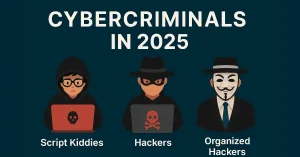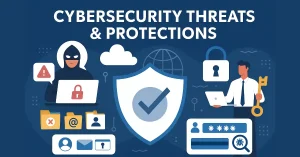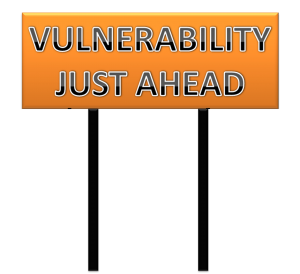In today’s digital world, cybersecurity is more important than ever. As technology advances at an incredible pace, the threat from cybercriminals is also growing rapidly. According to a report from Statista, there were over 750,000 unfilled cybersecurity jobs in 2023. In this article, we will discuss the correlation between cybersecurity and tech education.
The Skills Shortage and Its Risks
Most school curriculums have been slow to adopt cybersecurity or computer science courses that could spark students’ early interests. However, the war on cyber attacks requires skilled professionals with adequate knowledge of addressing emerging issues and trends in the cyber security space. Extortionists are becoming increasingly sophisticated, employing tactics like ransomware, phishing scams, and distributed denial of service (DDoS) attacks to compromise vulnerable organizations. When critical infrastructure systems and corporate networks are left unprotected, it threatens our security, privacy, and financial well-being.
Bringing Cyber Ed to the Classroom
Many experts agree that integrating cybersecurity education into primary and secondary school curriculums is crucial to developing the next generation of cyber warriors. Some states like Texas and Virginia have already introduced computer science and cybersecurity courses.
Challenges of Wide Adoption
However, most K-12 schools in the U.S. are still playing catch up due to various challenges. Integrating new subject material requires developing learning standards, training teachers, and procuring necessary technologies and lab equipment. It also requires shifting mindsets among some educators and parents.
Long-Term Benefits Outweigh Short-Term Costs
Integrating cyber ed at an early stage can help identify and nurture talent while raising awareness about digital safety and responsibility. It instills the values of integrity, ethics and defense that will serve students well regardless of their chosen career path. The long-term socioeconomic benefits of a more cyber-aware workforce would outweigh the initial investments required for adoption.
Expanding Higher Education Pathways
For students interested in cybersecurity as a profession, expanding access to higher education programs is crucial to meet the growing demand. Traditional 4-year degrees remain an excellent option, but online and hybrid models provide valuable alternatives.
Examples of Online Degree Programs
The Texas online computer science degree offers innovative degrees focused on cybersecurity. Arizona State University (ASU) and Drexel University provide flexible and accessible online programs in this field, offering programs that cater to the needs of working adults and those seeking career advancement. These programs allow students to learn from anywhere on a flexible schedule. With no standardized test requirement and instant enrollment, it removes traditional barriers to access.
Benefits of Affordable Online Options
Online programs help address barriers like high costs, scheduling difficulties from full-time employment, and geographic limitations. Their self-paced, flexible nature also empowers students to balance work responsibilities while advancing their education. As such, they constitute a significant step toward producing the skilled workforce needed for national cyber defense.
Building Bridges between Academia and Industry
While educational institutions expand cyber curricula, close collaboration with industry remains critical for practical job readiness. Through initiatives like:
Cyber Ranges and Capture the Flag Events
These activities provide immersive, hands-on experiences with real-world security tools and scenarios. Students can apply their growing skills in simulated environments.
Internship Programs
Workplace internships create invaluable pipelines for networking, skill-building, and potential full-time opportunities. They also provide on-the-job exposure to the latest defense methodologies employers are using.
Joint Research Initiatives
Collaborative R&D projects promote mutually beneficial knowledge exchange. They ensure cutting-edge discoveries and technologies transfer promptly between learning environments and organizations on the frontlines of cyber defense.
A Shared Responsibility for Long-Term Resilience
As cybersecurity intersects more domains, it has become a responsibility for everyone. While individuals must take ownership of basic cyber hygiene habits, wider systemic reforms require coordination.
Government Oversight and Policy
Laws, regulations, and broader policy frameworks influence how organizations prioritize security investments and share threat data. Strategic guidance from officials is paramount for cohesive national defense strategies.
Continued Education at All Career Stages
Between changing tactics and new technologies, lifelong learning remains crucial. Affordable recertification, conferences, and on-the-job training models support professionals’ mastery of evolving skills.
Growing Diverse Talent Pipelines
Concerted efforts to engage women, minorities and veterans can unlock untapped perspectives and help address historical inequities in the field’s demographics. This improves overall problem-solving abilities.
Career Prospects and Job Demand
Recent cybersecurity graduates have a wide range of exciting career opportunities available. Government agencies like the FBI, NSA and DHS are continuously hiring for intelligence analysis, digital forensics and infrastructure protection roles. Private sector opportunities span industries from banking and healthcare to technology manufacturing.
Room for Career Advancement and Constant Learning
Cyber roles span a vast spectrum, from technical positions like malware analysis to more strategic director-level opportunities. This allows ample room for professional growth throughout one’s career. By continually investing in training and certifications, individuals can take on leadership positions, shift specializations, or transition between private/public sector roles to keep work engaging. The changing nature of threats also ensures best practices require always staying on the cutting edge through lifelong learning.
Strengthening the Education-to-Career Pipeline
Schools need robust assistance connecting students to related careers to fully capitalize on their cybersecurity education investments. Early guidance and exposure help young people understand realistic paths and options within this multidisciplinary field.
Cybersecurity Career Fairs and Networking Events
These activities bring together students, academic institutions, and employers from diverse organizations. They facilitate face-to-face networking, resume reviews, and informational interviews that often help spark full-time opportunities or internships.
Mentorship Programs
Pairing cyber students with professionals for ongoing guidance, students gain valuable advice and career development support. It gives them insider perspectives on various roles as well as role models. For companies, it fosters a continuous talent pipeline and a positive employer brand.
Apprenticeship and Work-Study Programs
On-the-job training opportunities integrate academic study with hands-on competency building. They offer students income, resume-boosting experience, and interview support while reducing costs. Many apprentices convert into full employees afterward.
With robust career services, students are much more likely to transition seamlessly into cybersecurity occupations matched to their interests and strengths. It guarantees returns on both individuals’ educational investments and organizations’ stakes in the next generation.
Conclusion
In conclusion, the growing cyber landscape demands an integrated societal approach. By cultivating skills and interest from young ages, increasing the accessibility of educational pathways, and promoting multi-sector partnerships, we can collaboratively fortify our digital defenses for decades to come. A long-term view of inclusion and learning as a shared duty will best serve an interdependent world.





